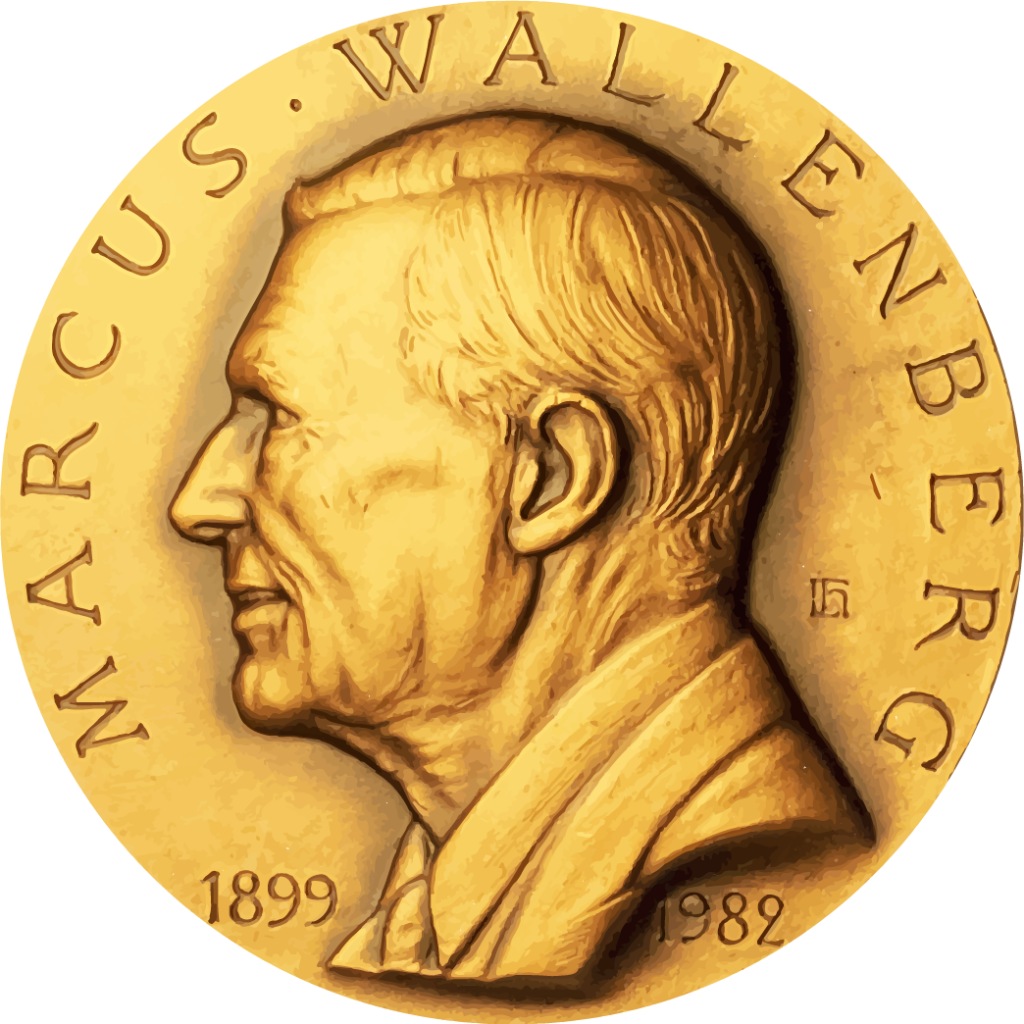The 2013 Marcus Wallenberg Prize is being awarded to Professor
Derek Gray
The 2013 Marcus Wallenberg Prize is awarded to Professor Derek Gray, McGill University, Canada, for his contributions to the path breaking research on nano crystalline cellulose (NCC), its fundamental properties and applications. The fundamental discoveries, related to the chiral nematic behavior of NCC suspensions, create potential for new wood and other lignocellulosic products for unique value added applications. Gray’s research has inspired researchers all over the world to intensify research on nanocellulose in general, thus opening future business possibilities for the forest-based sector.
Wood cellulose is composed of both crystalline and amorphous parts. The amorphous parts can be removed by strong acid hydrolysis, for example, and as a result nano crystalline cellulose (NCC) is liberated. NCC consists of rigid, needle-like crystals of cellulose chains, 3-10 nm thick and 100-300 nm long.
The liquid crystalline behavior of hydrolyzed cellulose suspensions was first reported in 1951 by Bengt Rånby, Uppsala University, and subsequently in 1959 by Robert Marchessault et al. at McGill University, Montreal. Derek Gray investigated the liquid crystalline behavior of various cellulose derivatives and conditions for forming these structures as reported in publications with different authors during 1980-1990. The publications strongly contributed to triggering widespread research into applications, with an explosion of publications from many groups, in particular after 2003-2004.
In 1992, Revol, Gray and colleagues published their discovery that NCC at defined conditions can form stable chiral nematic liquid crystalline phases. (The initial work was done in the laboratory of the late Dr. Revol.) In publications from 1997 and 1998, Revol, Godbout, Gray and colleagues showed that simply by casting films from suspensions of cellulose crystallites, cellulose films with the optical properties of chiral nematic liquid crystals could be prepared. Derek Gray further significantly contributed to the understanding of fundamental physicochemical properties of the chiral nematic crystalline phases using different analytical methods.
The ordered structures have exceptional optical properties, being of the size of the wavelength of visible light. They can be modified and controlled giving fascinating potentials for polarizing mirrors, lasers and optical security devices with pigments or films showing different colors depending on the angle of viewing; in fact these already exist in nature in the brilliant iridescent colors of beetle exoskeletons.
The research carried out by Gray and others on the chiral nematic structures and subsequently into the broader field of nanocrystalline cellulose and its properties has paved the way and facilitated exploitation of wood cellulose in several kinds of value added applications. The nanoscale dimensions and surface chemistry of NCC and the many forms in which it can be utilized create the potential for its use to enhance the properties of a wide range of products including – films in “intelligent” packaging materials, printed paper electronic devices, switchable optical films, innovative coatings for papermaking, advanced building products, bio-composites for bone repair, additives for paints/pigments/inks and for cosmetic products, iridescent or magnetic films, and in semiconductor crystal dots.
This non-exhaustive list of possible applications shows the potential, thus opening future business concepts that can be realized by the forest-based sector in cooperation with other sectors.
Derek Gray
Professor Derek Gray was born in 1941 and studied chemistry at Queen’s University, Belfast, Northern Ireland, graduating in 1963. In 1968, he gained a doctorate in polymer chemistry at the University of Manitoba, Winnipeg, Canada. He continued his research between 1968 and 1971, first at the University of Newcastle-upon-Tyne, England, and then at the University of Toronto, Canada. From 1974, he was employed at McGill University, Montreal, first as research assistant and then, between 1990 and 2004 as Paprican Adjunct Professor. Between 2004 and 2011, he held the Gray Paprican/NSERC IRC professorship in the properties and applications of cellulose in the Department of Chemistry at McGill University. He retired from the professorship in August 2011. Professor Gray authored or co-authored 201 scientific articles, patents and chapters in books. Derek Gray is a highly popular speaker at conferences all over the world.
Prize ceremony and symposium
The prize was awarded by His Majesty the King of Sweden at a ceremony held in Stockholm on 23 September 2013. A symposium on the award-winning theme and its importance to the forest industry and society takes place on 24 September.
Media
Photo by Janne Eriksson



